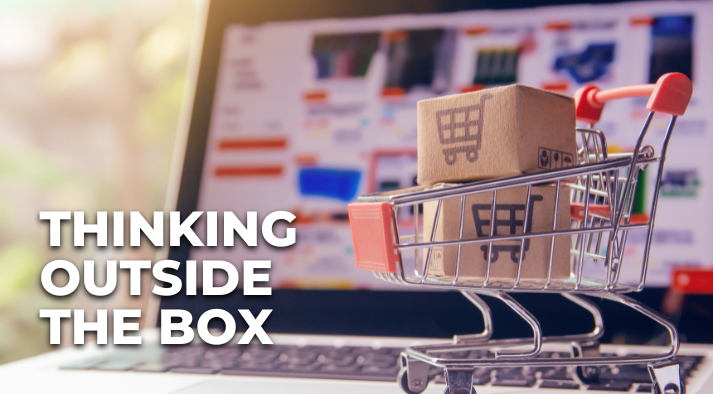


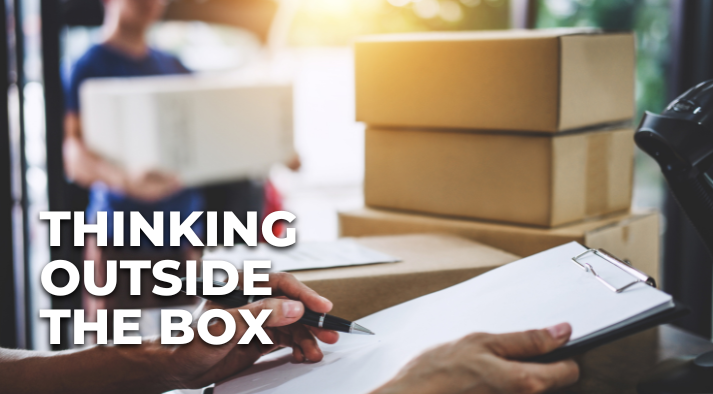

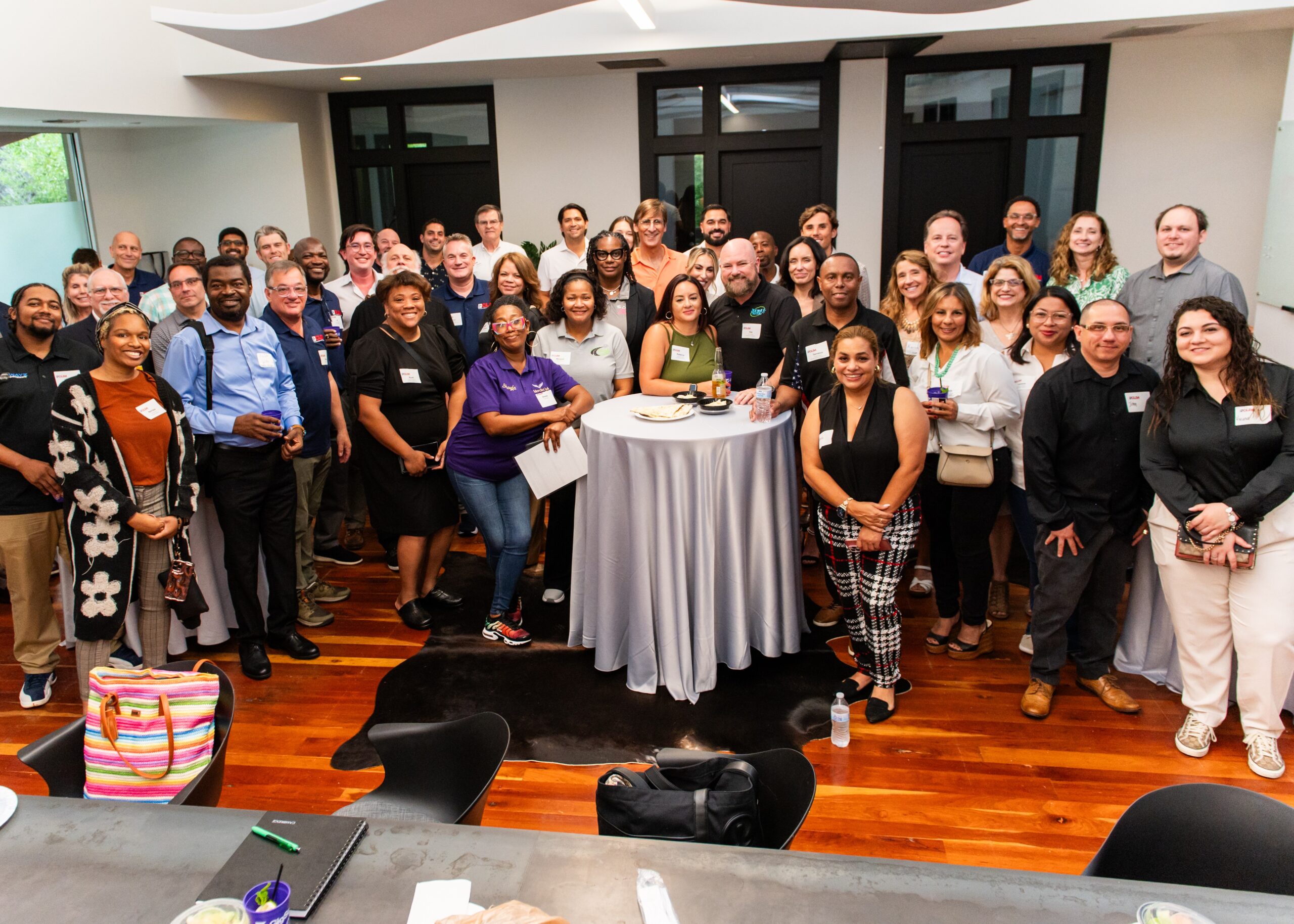
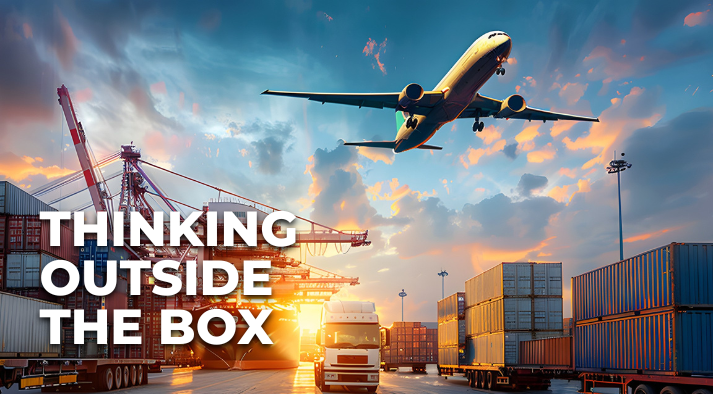

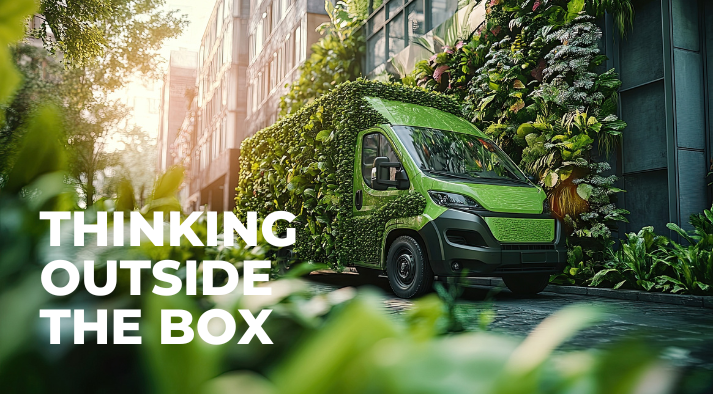



CLDA Members are encouraged to share news about their company. CLDA may share on social media, in newsletters or the Customized Logistics & Delivery Magazine.

Ready to share your news with CLDA or the industry media? Learn from these tips and tricks on how to get noticed.

 There’s no question that the impact of tariffs will ultimately hit those in last-mile logistics. But how? And what can carriers do while these and other issues are still in flux? Build the ability to flex and strengthen existing relationships with shippers. Those were the two pieces of advice for carriers coping with the dizzying changes involving tariffs and other fast-moving issues, from Guru Rao, CEO of nuVizz.
There’s no question that the impact of tariffs will ultimately hit those in last-mile logistics. But how? And what can carriers do while these and other issues are still in flux? Build the ability to flex and strengthen existing relationships with shippers. Those were the two pieces of advice for carriers coping with the dizzying changes involving tariffs and other fast-moving issues, from Guru Rao, CEO of nuVizz.
This Atlanta-based last-mile TMS platform has been arming carriers and shippers to ride the waves of change since 2013. “We help these companies optimize and better run their businesses so they can provide a better customer experience to all of their end customers. We help orchestrate the delivery process,” he says.
So, how does this “orchestrator” of the delivery process think about today’s dynamic situation involving tariffs? And how does he advise carriers to deal with this ever-changing environment? For Rao, it’s all about using technology to reinforce a company’s ability to adapt and using their people skills to stay close to the customers.

Rao made it clear that predicting the rise and fall of tariffs is a fool’s game. “I’m not even going to venture into predicting what might happen with tariffs tomorrow,” he said. “But I will predict we’ll always be dealing with disruption. And that’s nothing new for those in the last-mile. If you look at the logistics supply chain in general, in the last five to 10 years, there’s been a lot of volatility and unpredictability in the ecosystems thrown at us. The only constant is change. The environment we live in, and many of our customers live in, is unpredictable. We’ve always been used to this volatility, but now we live in a hyper-volatile, hyper-dynamic environment.”
He pointed out that many in the industry are experienced with disruptions. Those in the last-mile know how to react to issues caused by weather or the seasonality of the sales cycle. “We are all used to disruptions. We know things don’t go the way we plan. And that something will always go wrong. But that typically happens based on seasons. You do one thing in the summer. Something else in winter. You do things differently in one part of the country than in another. You can plan for these known unknowns to some extent because you have experience with them. But today, especially with the tariff situation, there is no way to plan for the variability in supply and demand that each change could bring. The variability in demand and supply can change every day. One day, the tariffs are high. So you will not get anything from certain countries. And another day it’s lifted. So you get a sudden rush to get everything into the country.
Rao talked about what he called the “bullwhip effect” for those at the tail end of the supply chain. “It’s a term we typically use in the context of inventory where the impact of supply and demand gets magnified by the time it reaches the last-mile. When it comes to the impact of tariffs, it’s all about the downstream impact of those policies,” he says. “That is where the last-mile players are challenged to respond to an ever-changing demand. If you are moving 100 orders today and suddenly have to move 500 orders tomorrow, it cannot happen without the right assets in place. Where are you going to get those resources? That takes time and relationships. The nature of the business has become so volatile. And it’s tough for anyone to really predict or plan for it. But you still have to run your business. We cannot say, ‘I’m going to shut down shop for six months, wait for everything to settle down,’ and then come back and pick it up.”
While you can’t predict change, you can arm your company with the tools to be more nimble. “No human can manually manage the changes at the pace we’re seeing today,” said Rao. “That is where the technology plays a huge role. You cannot predict what happens, but at least you can reduce your risk using technologies that help you face those challenges. No one can scale based on the demands being put in front of us today without help. Technology allows both couriers and shippers to be nimble in the face of change.”
For shippers, those changes may involve how many products they bring in and need to get out. “If you look at it from a shipper’s perspective now, they may have to bring in two times what they used to generally buy in the face of an upcoming tariff. With their existing carrier base, they can only support what they had on hand in the past. However, with today’s inventory, they need to find new delivery partners to move it. If they do it the traditional way, they’d have to take time to negotiate contracts, bring a carrier on board, and get them into the network. They don’t have the time in today’s world. That’s where technology comes in. They can bring in a new carrier with minimal disruption, add more resources to their network, and make it work faster with today’s technology.”
That same process takes place at the carrier level. Technology helps them scale up or down. To bring in additional resources as quickly as possible when needed. “The right technology allows carriers to easily tap into the resources they need to respond to changing supply and demand levels. To be able to react to changing requirements,” Rao says. “That means the carrier doesn’t have to use their energy to follow every chain. They can use their mental energy to get the technology to the point where it can flex up or down, no matter what happens. And make sure customers know they have the technology to respond, no matter what disruptions hit. Today, that’s all about tariffs. Tomorrow I’m sure it’s going to be something else.”
Rao’s second piece of advice is about the people side of the equation. “It’s all about strengthening your relationships with shippers,’ he points out. “Understand that everybody is going through the same pain. As a carrier, the best thing you can do is understand the shipper’s pain. And if you are a shipper, understand the carrier’s pain. We have to look at it on a humanistic level, which adds a little empathy to all of this. Technology can’t do that. AI can’t do that. People can do that. “At the end of the day, we all know this craziness will end. What won’t change is the need to nurture human relationships. As long as we maintain those, people will be more understanding. It’s important to keep those relationships as healthy as you can. We are all part of a network. Today, more than ever, we have to spend much time keeping and maintaining that network.”
Rao points out that technology can free up team members’ time to build and solidify human relationships. “Think about how you can use tech to automate some of the tasks that take up your time,” he says. “Think about how you can automate your operations. Ask yourself, ‘What technologies help me do that?’ This is not about today’s problem. This is going to be an ever-present situation. We live in this hyper-volatile and hyper-dynamic environment, and I don’t expect this to die down anytime soon. So we need to be thinking about it in those terms, with technology as an enabler to help us be ready for those changes as they come about. Use the technology to free up more time to be human. If you spend an extra two hours trying to manage, you take away those two hours from talking to your customers, vendors, and team members. Technology gives you back those two hours. Then, your people can talk to other people. We are all human. Humans are better at interactions than any technology. AI is not there yet. I don’t think it is ever going to be there. I don’t think it will ever read a face and say, ‘Hey, you’re in pain, right?’ We humans can easily do that. So, the best use of our time is to create that human touch. Technology is good at doing things, so use it that way, and then use your people to elevate their game and have a more humanistic approach to our interactions with your partners.”
In the end, it’s not about tariffs. It’s not about change. That will always be with us. It’s the nature of the last-mile. To sum up Rao’s advice, it’s this: Prepare yourself to ride with the tide. Solidify your relationships with your customers. Then, you’ll be ready for whatever disruptions hit next.

One thing is clear: Electric vehicles (EVs) in last-mile will become a significant way for carriers to cut fuel costs, control repair expenses, and reduce overhead. What’s not clear is when.
“For last-mile carriers, electric vehicles make so much sense. However, until the political and regulatory unknowns crystallize, a lot is up in the air about when this sector will fully embrace the use of electric vehicles. But we expect that it will happen eventually,” says Dennis Bolton. He is the senior managing director and head of equipment finance for Gordon Brothers, a company specializing in asset services, lending and financing, and trading.
Bolton points to delivery giants like Amazon and Walmart, which have already committed to EV technology. He sees this using these vehicles in the supply chain. “There’s a reason these companies use electric vehicles – they are very efficient in their operations. Granted, these big companies have lots of capital, but it’s a strong statement about the feasibility of the technology,” he says.
Bolton sees a real fit for the efficiency and low costs of operating EVs for those in the last mile. “When it comes to productivity, there are huge benefits over time for the last-mile sector compared to the traditional internal combustion engines,” he says. “When you think about the starts and stops in the last mile, we know EVs perform so much better, with less cost per mile compared to the inefficiency of internal combustion engines. That’s especially true in cities where the cost per mile escalates because of the additional fuel burned when you start and stop an internal combustion engine. You don’t have that with EVs. Remember the friction from stopping an EV recharges the battery. That same friction ends up wearing out parts for an internal combustion engine. This shows up in the cost of repairs and the need to replace them over time.”
With that said, Bolton acknowledges the current high cost of the vehicles makes them a capital investment that’s out of reach for many carriers and drivers. “I think it’s the classic trade-off between the cost of entry and the cost per mile,” he says. “You have to ask yourself, ‘Is it worth it right now?’ It is a high upfront cost if you’re talking about the increased costs of buying EV vehicles and the need to install on-site charging stations. However, over the vehicle’s life, the cost per mile is much lower, and not just in terms of fuel costs but also repair costs. There are a lot fewer moving parts in an electric vehicle compared to an internal combustion engine. This means the level of maintenance and the degree of wear are lower. So, the payback on an EV comes over time, but you still have to make that upfront investment. For well-capitalized companies, that’s not a problem. For those who aren’t or independent contract drivers considering purchasing an EV, that’s certainly more of a challenge.”

There’s also an impact on route optimization. There’s a gas station on every corner, but that’s not the case for charging stations. “If you are an asset-based company or an independent contractor with the infrastructure at your home base, you can support the vehicle. So route planning won’t be that much of an issue,” says Bolton. “But if you don’t have that infrastructure and must use only public charging stations, then you’re going to have to be very careful in your route planning to make sure you’re efficient.”
He also points out that, depending on the range and driving patterns of the drivers, there may be a need to charge during the day. “You’ll have to factor in the location of charging stations when you plan the route and anticipate the time it will take to do it,” he says. “But that’s just a matter of including those factors when your system plans your routes.”
Bolton acknowledges the conversion to EVs will take time. “I think there’ll be people in the market who have always used internal combustion vehicles and will be reluctant to adopt this technology. It will take them a little while to become converts,” he says.
There’s also the reality of the current environment. A year ago, the consulting firm Deloitte projected “…a pivotal transformation in the logistics landscape [towards EVs], driven by environmental concerns, consumer demands and industry giants…” by 2030. A lot has changed in 12 months. “Today, there are a lot of unknowns. Where we saw heavy investment in EVs with government incentives and support, today, there is a lot of uncertainty. Companies are starting to question what’s going to happen in this environment. They are asking themselves whether now is the right time to make that investment, or whether they should look for a more stable regulatory environment or better direction before jumping. As a result, we’re seeing businesses scaling back on their EV investments,” says Bolton
He believes the economics of using electric vehicles will eventually cause the market to change. “There are a lot of unknowns today, and, until those settle, adoption will be slow,” he says. “We expect to see a dampening effect over the next few years. That said, I think it’s just a matter of time before EVs play a significant role in the last mile because the economic model makes so much sense for this sector. They are very efficient in their operations. Yes, the industry will have to work through the capitalization and infrastructure issues, but it’s going to happen. It’s only a matter of time.”
| Welcome to Thinking Outside the Box, a new series of posts about trends impacting those involved in the final-mile. Every month, we’ll interview one of our industry’s thought leaders to give you their insights into where the industry is now and how CLDA members can succeed today, tomorrow and in the future. |
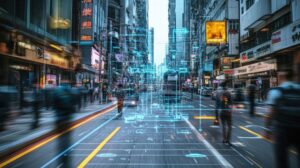 Final mile trends bring opportunities and challenges to companies big and small. The biggest challenge facing those who deliver in the final mile is cost-effectively meeting customers’ heightened delivery expectations. COVID raised the delivery expectation bar to levels we’ve never seen before. Everybody in our industry responded to that well, but most of the time, they did so without looking at the bottom line. People wanted things now, and last-mile providers responded. They added more resources, the supply came in, and the industry got it done. But, those demand levels did not sustain post-Covid. The biggest challenge for last-mile providers is adapting to and responding to the new normal in consumer demands because almost everything is getting delivered everywhere today. Even in the most traditional verticals – ones we thought would never be touched by this – such as healthcare are handled by those in the final mile sector.
Final mile trends bring opportunities and challenges to companies big and small. The biggest challenge facing those who deliver in the final mile is cost-effectively meeting customers’ heightened delivery expectations. COVID raised the delivery expectation bar to levels we’ve never seen before. Everybody in our industry responded to that well, but most of the time, they did so without looking at the bottom line. People wanted things now, and last-mile providers responded. They added more resources, the supply came in, and the industry got it done. But, those demand levels did not sustain post-Covid. The biggest challenge for last-mile providers is adapting to and responding to the new normal in consumer demands because almost everything is getting delivered everywhere today. Even in the most traditional verticals – ones we thought would never be touched by this – such as healthcare are handled by those in the final mile sector.
“It’s not just about technology for the sake of technology, but technology for the sake of making life better,” Guru Rao.
This month, Thinking Outside the Box interviewed Guru Rao, CEO of nuVizz, Inc., a last-mile TMS platform company and CLDA member. Rao will also be a presenter at next month’s Final Mile Forum. Here are some excerpts from our conversation with him.
This industry is undergoing significant transformation. Here are some of the trends and challenges we see as shaping the landscape for those in the final mile.
Service providers must learn to work with various partners and operate many different types of businesses to sustain and operate profitably. Couriers must also have the flexibility to work across different verticals and for different customers.
That means that carriers must operate in co-mingled consolidated delivery scenarios. They will need to find ways to interact with many different shippers. These will be other types of businesses, each with their own requirements. You won’t be able to operate in the traditional ways of responding to demand, answering customer queries, and handling billing manually. And you will be doing more of it every day. That’s where technology comes into play. It will help you do all those things in an automated fashion so you can do more with less.
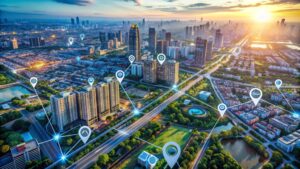 The world is evolving into a dynamic ecosystem. We used to live in a static world where everything was known. You could plan for the next few weeks and know what to expect. But that has completely changed. Now, you must pivot to react to demands that change by the minute.
The world is evolving into a dynamic ecosystem. We used to live in a static world where everything was known. You could plan for the next few weeks and know what to expect. But that has completely changed. Now, you must pivot to react to demands that change by the minute.
The ever-changing nature of business operations today calls for dynamic optimization. You can no longer depend on your dispatchers to react and find the right answer in today’s compressed time spans, which may be minutes or even seconds.
This is where the technology comes into play. Because it is humanly impossible for anyone to look at millions of data points to make a decision. But computers and technology are designed to be able to do that. They can handle dynamic optimization so you can operate in this new, ever-changing world of delivery without having to invest in more people. The technology takes what is more complicated and allows you to do more.
The need to be able to deliver everywhere has fueled the trend toward microfulfillment centers. Shippers that want to cover more and more zip codes are eyeing these microfulfillment centers. When a shipper wants to deliver to more people, transportation is a huge cost. Their response is to take the inventory closer to where the deliveries need to be, cutting transportation costs and increasing customer service by getting things to them faster.
AI will be a tremendous asset to those in the last-mile delivery system because they must deal with large amounts of data.
Logistics, especially in the final-mile area, operates in a real-time environment that generates millions and millions of data points. And when you have so much data, AI is the best tool to use that information and provide the right answers. We see it as a critical tool for planning, execution and post-execution analysis.
When last-mile providers are planning, you need to look at millions of data points, whether inventory planning, network optimization, opening new distribution centers or daily route optimization. Those decisions involve millions of permutations and combinations for the right answer. AI plays a huge role here because you cannot rely on humans to be able to do that.
You can do all the planning in the world, but exceptions will still happen. And in today’s delivery environment, you don’t have two days to react to those exceptions. You have minutes or even seconds. During that time, you’ve got millions of data points to figure out what to do next. What resources do you need? How can you redirect the work? How will you interact with the customer? How many people can you put in front of this problem right now? AI is a great tool, but it has one caveat: you must have the right data. Data is the most critical part of any AI conversation. As long as you have good data, the AI agent can quickly figure out and answer most of your customer queries. It can help you manage those exceptions and remove human involvement.
You’ve done planning and execution, and those steps give you reams and reams of data; that data is golden. Learn from it. AI can help you look at the patterns in the data you have generated. AI will help you figure out what the opportunity is. Are you consistently delivering late to one customer? What are the factors contributing to that? AI can look at the historical data elements and suggest a better way of planning. It will create a continuous improvement cycle, refining your business and adding efficiency every time you use it.
Couriers looking to do more with fewer people can mobilize the power of AI to create their own autonomous delivery ecosystem. Consider the alternative—the spreadsheet. If you are putting 100 things into a spreadsheet day in and day out, there’s no way a person can master all that data. On the other hand, you can easily automate that process with AI to create what we call an autonomous delivery system. Technology is very smart. As long as you track everything that is happening, it can be more efficient than one person trying to make sense of all that data.
Let’s take the example: Suppose a driver can’t deliver a product because the customer is not there. They have to mark it as “not delivered.” That typically means getting one of your dispatchers involved in watching for and reacting to that exception. In an autonomous delivery environment, the system sees that exception and creates a rule based on what needs to happen next. If this is the type of order that can be delivered the next day, it looks at the scheduled routes for tomorrow going to the same area. If not, it can find the right route to insert that into for the next day, sending a communication to both the driver and the customer with that information. All of that can happen without anybody sitting in front of their computer and watching for these exceptions.
If you’re a small company using technology appropriately, you can behave like a big company. Today’s technology enables what we call a democratization of capabilities. You don’t have to be Amazon to have the level of sophistication to provide visibility every step of the way. You don’t need to spend billions of dollars. It is readily available today with today’s technology. Today’s technology democratization allows you to do that.
If you use technology well, your service becomes more human. Technology creates the space for real interaction. Suppose you let technology handle the mundane tasks of managing millions of data points. In that case, you can use your people to add value and cultivate more relationship-based interactions with your customers, especially when context is important.
Why make your people go through spreadsheets with 100,000 lines of data? Let technology do that, and then you can use members of your team to talk to people and establish relationships. Technology can do wonders, but it cannot do simple things like looking into someone’s face to see that they are in pain. People can easily do that. So, use people in those areas and let the technology do what it is best suited to do.
It’s not just about technology for the sake of technology, but technology for the sake of making life better.
***
Want to hear more from Guru Rao? Catch his presentation, “Demystifying AI and Logistics,” at the Final Mile Forum next month. There’s still time! Register now so you don’t miss out.
Here’s a sneak peak in Guru’s own words:
***
Let us know what you think of “Thinking Outside the Box.” Let us know if you have follow-up questions, reactions, or ideas for future posts. Email us at aobston@aomc.com